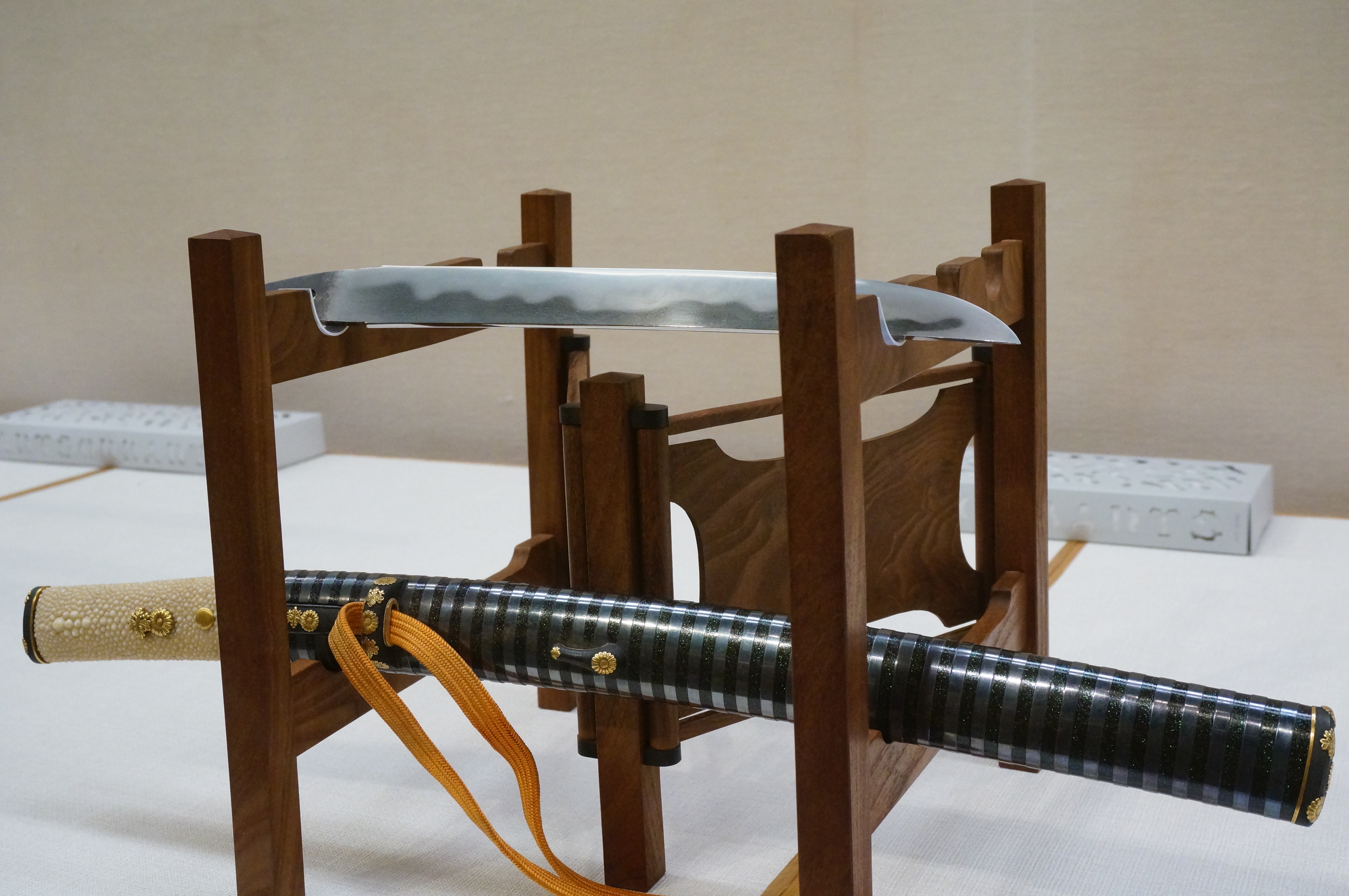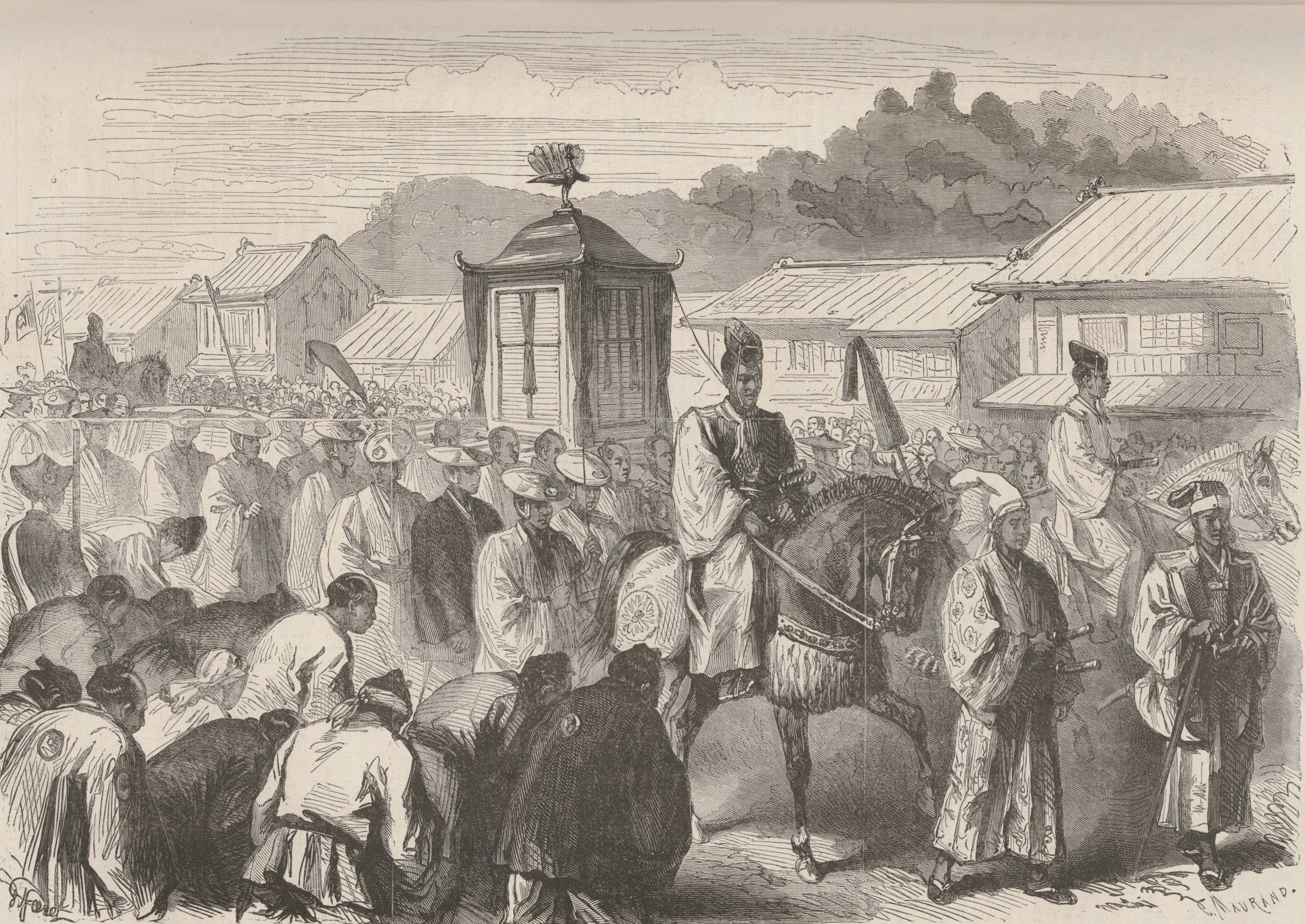|
Daishō
The —"large and small"—is a Japanese term for a matched pair of traditionally made Japanese swords (''nihonto'') worn by the samurai class in feudal Japan. The etymology of the word ''daishō'' becomes apparent when the terms ''daitō'', meaning long sword, and ''shōtō'', meaning short sword, are used; ''daitō'' + ''shōtō'' = ''daishō''. A ''daishō'' is typically depicted as a ''katana'' and ''wakizashi'' (or a '' tantō'') mounted in matching '' koshirae'', but originally the ''daishō'' was the wearing of any long and short ''katana'' together. The ''katana/wakizashi'' pairing is not the only ''daishō'' combination as generally any longer sword paired with a ''tantō'' is considered to be a ''daishō''. ''Daishō'' eventually came to mean two swords having a matched set of fittings. A ''daishō'' could also have matching blades made by the same swordsmith, but this was in fact uncommon and not necessary for two swords to be considered to be a ''daishō'', as ... [...More Info...] [...Related Items...] OR: [Wikipedia] [Google] [Baidu] [Amazon] |
Japanese Sword
A is one of several types of traditionally made swords from Japan. Bronze swords were made as early as the Yayoi period (1,000 BC – 300 AD), though most people generally refer to the curved blades made from the Heian period (794–1185) to the present day when speaking of "Japanese swords". There are many types of Japanese swords that differ by size, shape, field of application, and method of manufacture. Some of the more commonly known types of Japanese swords are the ''uchigatana'', ''tachi'', ''ōdachi'', ''wakizashi'', and ''tantō''. Etymology The word ''katana'' was used in ancient Japan and is still used today, whereas the old usage of the word ''nihontō'' is found in the poem the Song of ''Nihontō'', by the Song dynasty poet Ouyang Xiu. The word ''nihontō'' became more common in Japan in the late Tokugawa shogunate. Due to importation of Western swords, the word ''nihontō'' was adopted to distinguish it from the . ''Meibutsu'' (noted swords) is a special designat ... [...More Info...] [...Related Items...] OR: [Wikipedia] [Google] [Baidu] [Amazon] |
Katana
A is a Japanese sword characterized by a curved, single-edged blade with a circular or squared guard and long grip to accommodate two hands. Developed later than the ''tachi'', it was used by samurai in feudal Japan and worn with the edge facing upward. Since the Muromachi period, many old ''tachi'' were cut from the root and shortened, and the blade at the root was crushed and converted into a ''katana''. The specific term for ''katana'' in Japan is and the term ''katana'' (刀) often refers to single-edged swords from around the world. Etymology and loanwords The word ''katana'' first appears in Japanese in the ''Nihon Shoki'' of 720. The term is a compound of ''kata'' ("one side, one-sided") + ''na'' ("blade"),1995, (''w:Daijisen, Daijisen'') (in Japanese), w:Tōkyō, Tōkyō: w:Shogakukan, Shogakukan, , entry available onlinhere/span> in contrast to the double-sided ''Tsurugi (sword), tsurugi''. The ''katana'' belongs to the ''nihontō'' family of swords, and is ... [...More Info...] [...Related Items...] OR: [Wikipedia] [Google] [Baidu] [Amazon] |
Wakizashi
The is one of the traditionally made Japanese swords ('' nihontō'') worn by the samurai in feudal Japan. Its name refers to the practice of wearing it inserted through one's ''obi'' or sash at one's side, whereas the larger '' tachi'' sword was worn slung from a cord. History and use The production of swords in Japan is divided into specific time periods:Transition of kotō, shintō, shinshintō, and gendaitō. Nagoya Japanese Sword Museum Touken World * ''Jokotō'' (ancient swords, until around AD 900) * ''Kotō'' (old swords from around 900–1596) * ''Shintō'' (new swords 1596–1780) * ''Shinshintō'' (newer swords 1781–1876) * ''Gendaitō'' (modern or contemporary swords 1876–present) The ''wakizashi'' has a blade between in length. [...More Info...] [...Related Items...] OR: [Wikipedia] [Google] [Baidu] [Amazon] |
Koshirae
Japanese sword mountings are the various housings and associated fittings ('' tosogu'') that hold the blade of a Japanese sword when it is being worn or stored. refers to the ornate mountings of a Japanese sword (e.g. ''katana'') used when the sword blade is being worn by its owner, whereas the '' shirasaya'' is a plain undecorated wooden mounting composed of a '' saya'' and '' tsuka'' that the sword blade is stored in when not being used. Components *: The '' fuchi'' is a hilt collar between the '' tsuka'' and the ''tsuba''. *: The '' habaki'' is a wedge-shaped metal collar used to keep the sword from falling out of the '' saya'' and to support the fittings below; fitted at the ''ha-machi'' and ''mune-machi'' which precede the '' nakago''. *: A hook-shaped fitting used to lock the ''saya'' to the '' obi'' while drawing. *: The ''kashira'' is a butt cap (or pommel) on the end of the ''tsuka''. *: The '' kōgai'' is a spike for hair arranging carried sometimes as part of katan ... [...More Info...] [...Related Items...] OR: [Wikipedia] [Google] [Baidu] [Amazon] |
Samurai
The samurai () were members of the warrior class in Japan. They were originally provincial warriors who came from wealthy landowning families who could afford to train their men to be mounted archers. In the 8th century AD, the imperial court downsized the national army and delegated the security of the countryside to these privately trained warriors. Eventually the samurai clans grew so powerful that they became the ''de facto'' rulers of the country. In the aftermath of the Gempei War (1180-1185), Japan formally passed into military rule with the founding of the first shogunate. The status of samurai became heredity by the mid-eleventh century. By the start of the Edo period, the shogun had disbanded the warrior-monk orders and peasant conscript system, leaving the samurai as the only men in the country permitted to carry weapons at all times. Because the Edo period was a time of peace, many samurai neglected their warrior training and focused on peacetime activities such as a ... [...More Info...] [...Related Items...] OR: [Wikipedia] [Google] [Baidu] [Amazon] |
Tantō
A is a traditionally made Japanese knife () that was worn by the samurai class of feudal Japan. The dates to the Heian period, when it was mainly used as a weapon but evolved in design over the years to become more ornate. were used in traditional martial arts () and in the ''seppuku'' suicide ritual. The term has seen a resurgence in the West since the 1980s as referring to a point style of modern tactical knives, designed for piercing or stabbing, though the style is not present on any traditional tantō. A Tanto knife may refer to an American style of blade based of the Japanese , usually with a squared rather than curved tip. Description The is a single or double edged dagger with a length between (1 Japanese ). The was designed primarily as a stabbing weapon, but the edge can be used for cutting, slashing as well. are generally Forging, forged in the style (without a ridgeline), meaning that their sides have no ridge line and are nearly flat, unlike the structur ... [...More Info...] [...Related Items...] OR: [Wikipedia] [Google] [Baidu] [Amazon] |
Meiji (era)
The was an era of Japanese history that extended from October 23, 1868, to July 30, 1912. The Meiji era was the first half of the Empire of Japan, when the Japanese people moved from being an isolated feudal society at risk of colonization by Western powers to the new paradigm of a modern, industrialized nation state and emergent great power, influenced by Western scientific, technological, philosophical, political, legal, and aesthetic ideas. As a result of such wholesale adoption of radically different ideas, the changes to Japan were profound, and affected its social structure, internal politics, economy, military, and foreign relations. The period corresponded to the reign of Emperor Meiji. It was preceded by the Keiō era and was succeeded by the Taishō era, upon the accession of Emperor Taishō. The rapid modernization during the Meiji era was not without its opponents, as the rapid changes to society caused many disaffected traditionalists from the former samu ... [...More Info...] [...Related Items...] OR: [Wikipedia] [Google] [Baidu] [Amazon] |







